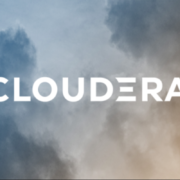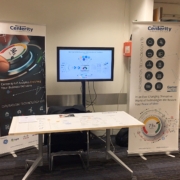Professional Performance Analytics and advanced modules available for MSP’s
According to a recent report published by MarketsandMarkets, the North American IT Managed Services market is predicted to grow to 242.45B USD by 2021, up from 145.33B in 2016.[1] Such a positive forecast underscores the massive explosion in modern IT complexity and the consequential increasing reliance of business leaders on outsourced IT experts. Likely as a result of this trend, the managed services industry has been and continues to undergo a massive shift in the way it delivers value to IT consumers. Gone are the days of reactive break/fix services, in favor of proactive ongoing management and maintenance, with the goal of identifying trends and preventing potentially disruptive technology issues before they can cause service degradation and disrupt critical business services. This shift exemplifies the larger consumer trend toward “____-as-a-service” consumption models, eschewing ad hoc investments in CAPEX for the more stable, predictable OPEX.
Not all managed service providers (MSPs) are created equal, however–nor do they all deliver the same services. A vendor’s services are only as effective as the tools they use and in this industry predicated on keeping up with new technologies and identifying potential risks proactively, no tool is more important than the IT performance analytics solution or Remote Monitoring & Management (RMM) tool.
Having a robust, holistic monitoring solution in place is absolutely crucial to maintaining the health and availability of complex, hybrid technology environments and providing clear, achievable service level agreements (SLAs) to clients.
And just like the sea change in the services industry at large, there has been an equally disruptive shift in performance analytics solutions and the value and features they are expected to deliver.
In basic terms, RMM solutions allow IT staff to continuously monitor and manage the health and availability of infrastructure components, augmenting the performance of present technical staff and maximizing use of resources.[1] Some solutions will offer more around management, including professional service automation (PSA) tools that incorporate support ticketing mechanisms, customer billing, and more, but for the most part RMM and PSA tools remain separate, with vendors instead differentiating their offerings through partnerships and ease of integration with PSA vendors. Unfortunately, when it comes to the actual monitoring, there has been little innovation—most tools still only provide basic monitoring of endpoints, network monitoring, and remote access to desktops, usually relying on the use of software agents installed in client environments to collect and send data back to RMM system. With the rise of cloud services, many vendors have come forward with SaaS RMM appliances in an attempt to court customers looking for an easy to maintain solution, but the monitoring itself remains no more sophisticated. Additionally problematic for MSPs with many diverse client environments, SaaS models necessarily require connectivity to the cloud, which may preclude clients in industries with strict security requirements (e.g. financial, government, etc.).
The biggest problem, however, whether SaaS or on-prem, are these tools’ failure to cover the application and database layers.
The recent leaps in application/database capabilities (e.g. ERP, Big Data, IoT) and their value to businesses, have understandably led to an application-centric view of technology in general. But even in a world of hyper-converged infrastructure and software-defined networking, there is still a dependence on infrastructure, physical or virtual, and for a monitoring solution to only consider one technology layer to the detriment of the other is to consider effect without cause. Most organizations still rely on using separate tools to monitor their infrastructure vs. applications. Not only does this mean higher spend on vendor licenses, it results in huge operational inefficiencies by forcing admins to constantly switch between tools and screens in an attempt to manually correlate alerts for an overall status of the environment. This means longer mean-time-to-restore (MTTR) from service disruptions and difficulty meeting customer SLAs.
What’s needed is a single solution capable of extending to every technology layer to correlate alerts from infrastructure, networking, and applications in real-time, while maintaining a single pane of glass view for seamless remediation.
Centerity Performance Analytics provides comprehensive technology to managed service providers, because it is designed to cover every technology layer while being extensible enough to monitor cutting-edge, disruptive technologies such as Big Data (SAP HANA, Hadoop, etc.), containers (Docker, etc.), and even IoT.
Most tools offer either agent-based or agentless monitoring, severely limiting the types and amounts of data they can collect. Centerity supports both methods, along with leveraging countless API integrations, to ensure that there is nothing in your clients’ data centers we can’t connect to and collect data from. Its multi-tenanted and federated architecture makes it ideal for scaling up and down according to your client base while ensuring that customer environments can be viewed and managed separately, an absolutely essential feature for any service provider.
Most important of all, however, is Centerity’s ability to deliver holistic, real-time SLA monitoring and reporting. Made possible only because the platform can extend across a client’s entire technology environment without leaving any gaps, Centerity can track the service availability of their critical business processes or even their entire environment, so there is never any question of whether you’re achieving your contractual SLA with your customers!
The technology landscape and its intersection with the world of business is growing every day, and with it, your opportunities to generate greater revenue. Your team keeps up with it—it’s time your tools did too!
[1] “Managed Services Market by Data Center (Hosting, Colocation, and Storage), Infrastructure (Print Services, Desktop, Inventory), Networking (Remote Monitoring, MPLS, VPNS), Information, Mobility, Communications, and Security – Global Forecast to 2021”. www.marketsandmarkets.com. 2016-09. Retrieved on 2016-09-30.
[2] “Remote Monitoring and Management (RMM)”. www.techopedia.com. Retrieved on 2016-09-27.
[1] “Managed Services Market by Data Center (Hosting, Colocation, and Storage), Infrastructure (Print Services, Desktop, Inventory), Networking (Remote Monitoring, MPLS, VPNS), Information, Mobility, Communications, and Security – Global Forecast to 2021”. www.marketsandmarkets.com. 2016-09. Retrieved on 2016-09-30.










